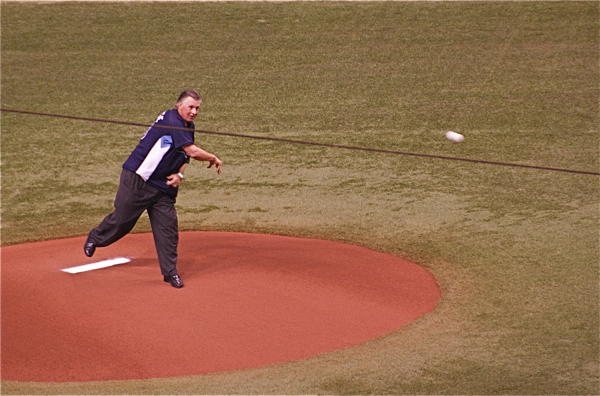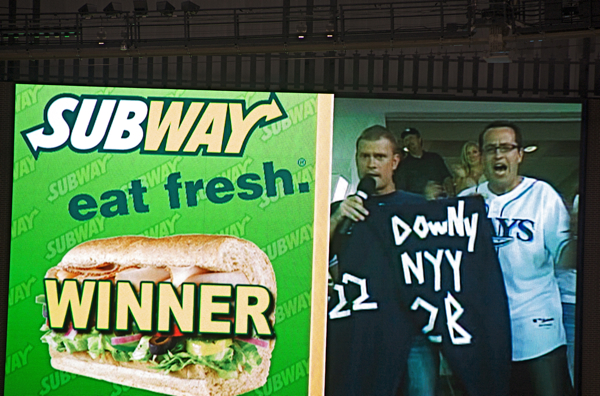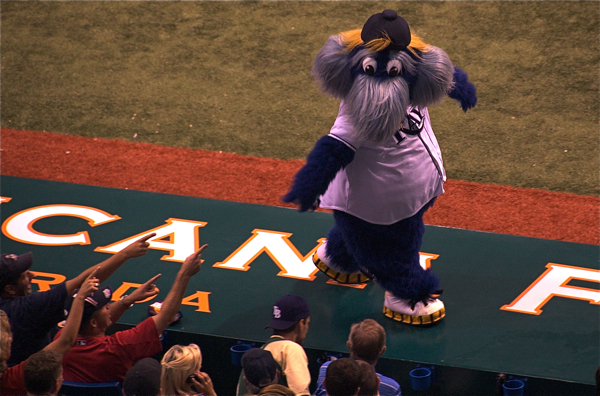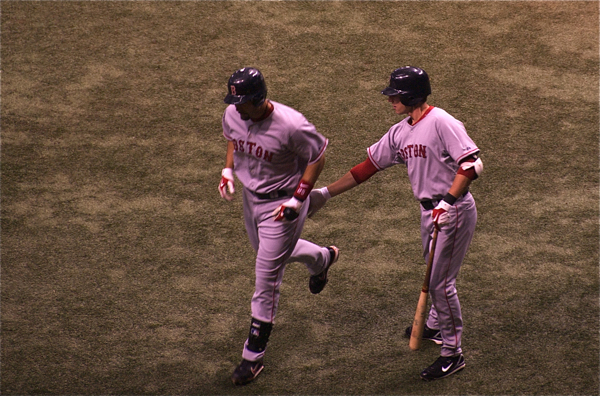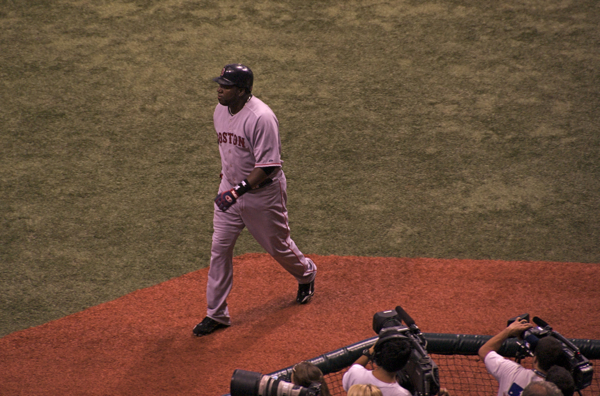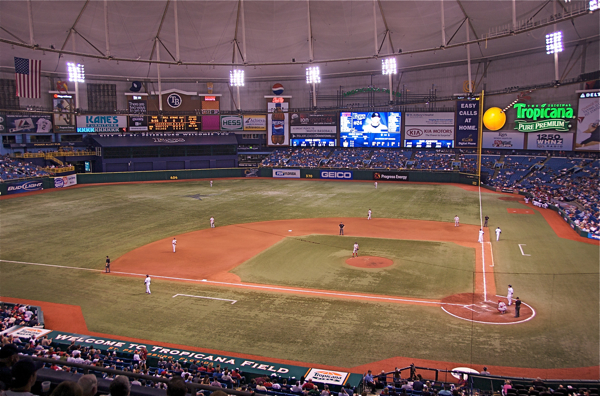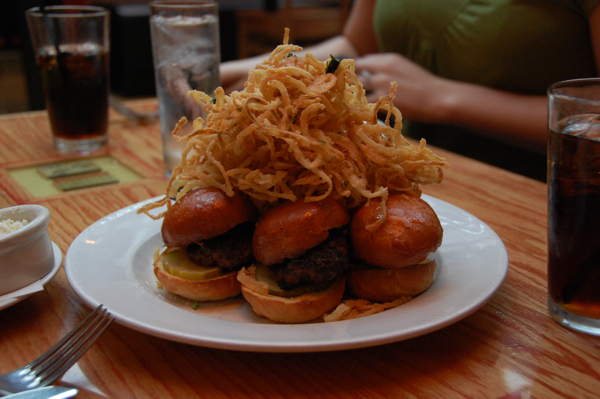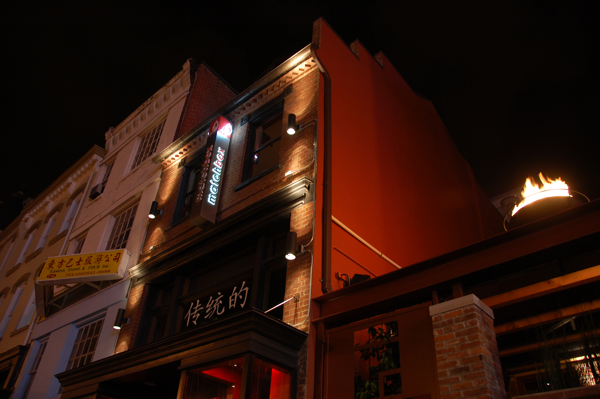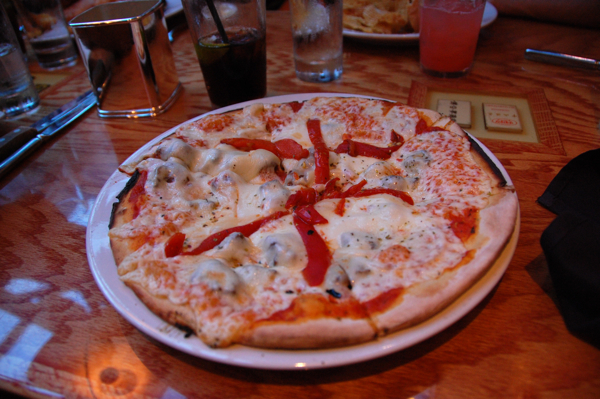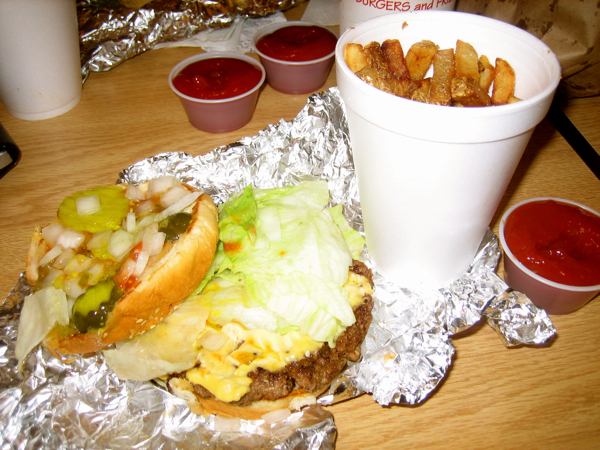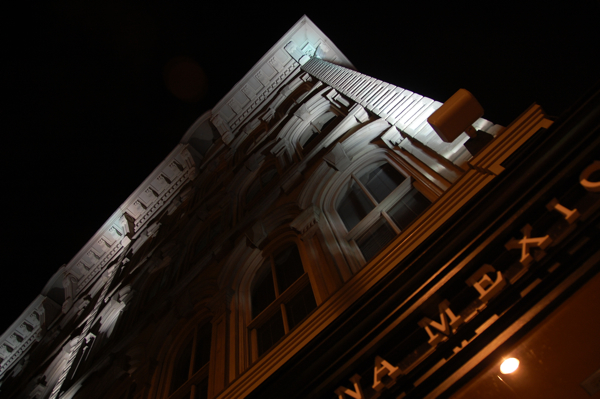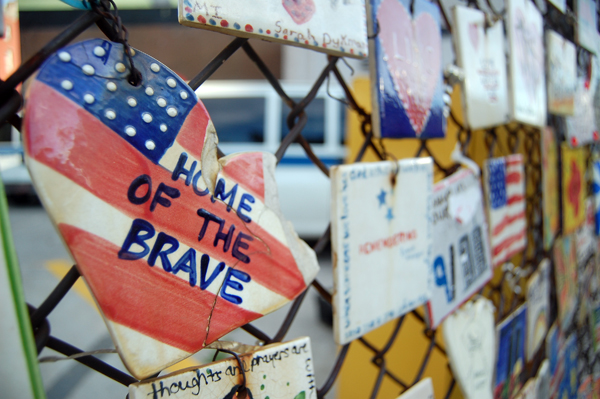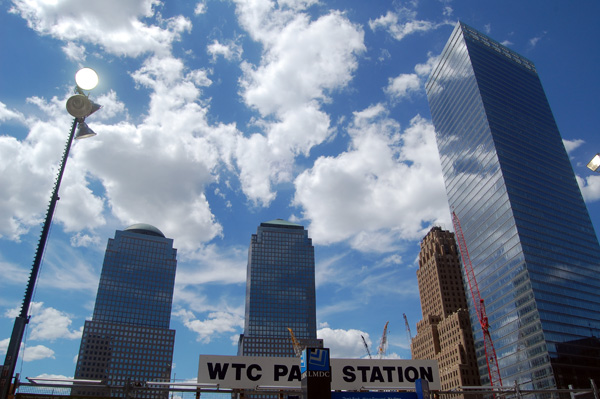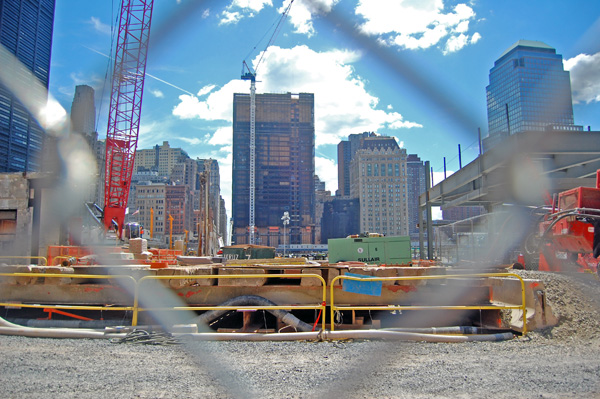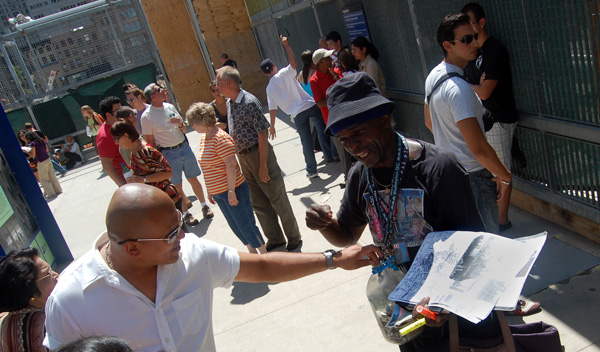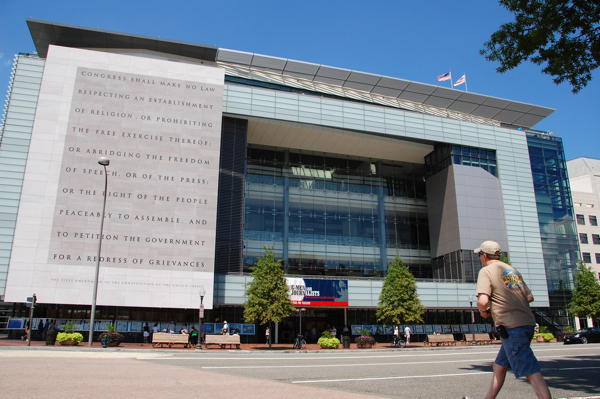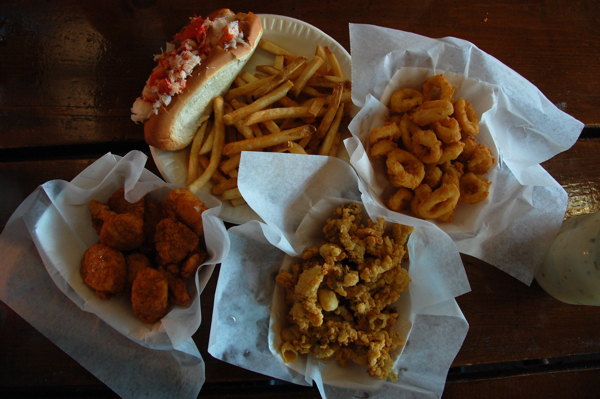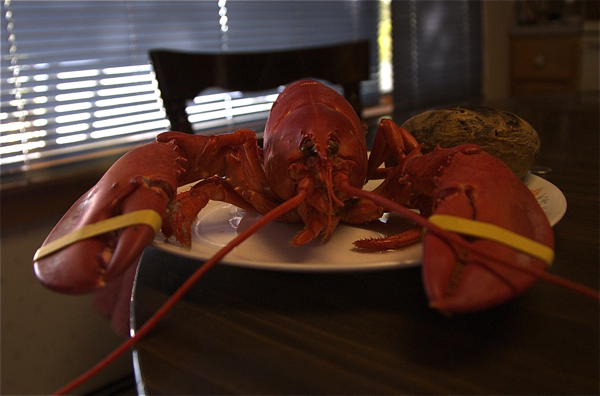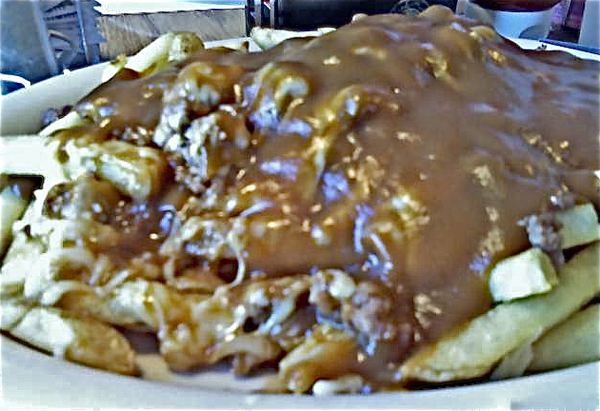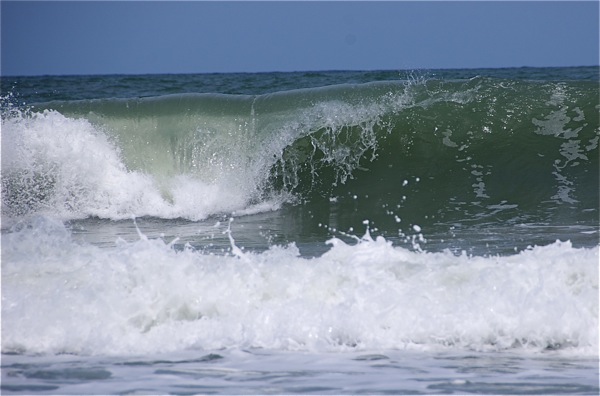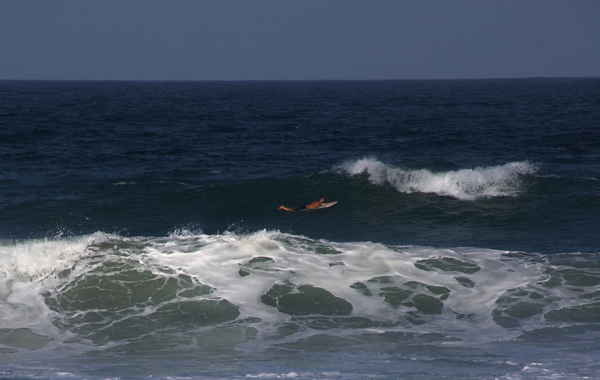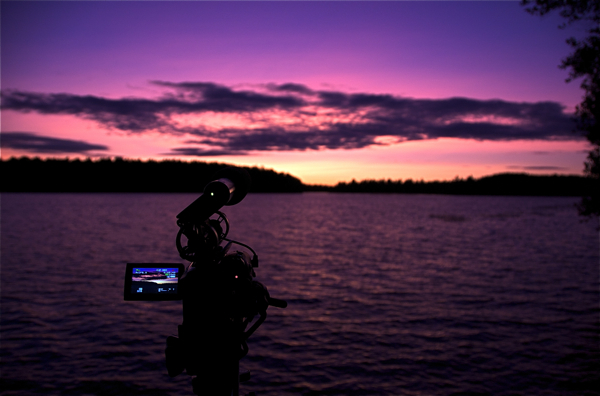The spread at Susan's Fish & Chips in Portland. From left, the pint of scallops, pint of clams, pint of calamari, fries and lobster roll. I almost puked - but not because it was bad.
I've decided that the only way to describe my attitude toward Florida is a love-hate relationship.
I love its natural beauty - the sunsets and sunrises, when I'm not sleeping or working through them. And for the most part, I love the weather - the warmth, sunshine and lightning.
I hate how everything but Walmart shuts down at 8 p.m. I hate the climate's lack of seasons. I hate the sprawling style of urban growth. I'm actually watching the Travel Channel's Samantha Brown as I write this post: She's talking about the "Southern charm" of Winter Park, just outside Orlando. So, I hate its phoniness.
But the most unforgivable of Florida's misgivings is its subpar seafood. I'm sorry to say that warm-water fish just doesn't cut it with me. Fish spoils in the warmth, so I guess that explains why Maine's cold-water varieties are so much tastier and meatier.
Calamari, clams, scallopsThe first thing I had to do during my Maine vacation was grab some fried seafood in some hole-in-the-wall joint.
So a friend and I went to Susan's Fish & Chips in Portland, where they had most everything on the menu - calamari, scallops, clams. I had to have it all, so I did - a pint of each, with some fries on the side. My friend, Molly, got the lobster roll, too, but my lobster meal was coming later, so I decided to steal just a few chucks of meat from her roll.
The calamari was great, but I wouldn't say Maine is known too widely for its squid. Where the state shines is in its clams and scallops. Having once hated scallops, I tasted the best ever at Susan's and had a bottomless lemonade to wash it all down.
But the highlight were the clams. I have never tasted better clams anywhere outside of Maine, and these were some of the best I've ever had. The most unique aspect of the clam experience is the bit of dirt that comes with each deep-fried bite. It's hardiness at its best.
I left Susan's full and happy, especially considering I had even more seafood to eat.
Red means he's dead, and he's got a potato behind him, which indicates an even greater state of deadness.
LobstahHaving gone through the start of lobster season in Florida before leaving for vacation, I was getting increasingly hungry for a taste of real, Maine lobster.
Florida's species, the spiny lobster, lacks one of the largest sources of meat in the Maine variety: the claws.
I never had the inclination to pay the $13 a pound for one of the Maine lobsters I see crawling around in a tank at the local Walmart Supercenter in Melbourne. So when I left for Maine and heard that lobster prices were down in New England, it was music to my ears. Juicy lobster meat dripping with butter was surely in my future.
But in the Maine supermarkets, it was still $10 a pound. Cheap? I think not.
Of course, you can easily pay 10 bucks for a 16-ounce steak, but with lobster, most of the weight you're paying for is the crustacean's inedible shell. It was going to take a better deal to get me to bite.
And that came with a trip to the Down East coast. I ran into a seafood market that was basically set up in someone's garage. The freezer was full of haddock, cod and salmon. And there was a large tank swimming with lobsters - with claws, of course. And at $6.50 a pound, I couldn't go wrong. "They're right off the boat this morning," the salesman, who wore rubber overalls, said. I got a 1 1/2-pounder for myself and another for the pops, who always had eaten one for his birthday, but skipped it this year because of the inflated price earlier in the season.
Unfortunately, the lobsters were a bit out of season. They were technically soft-shell lobsters, though they were quite hard. The most noticeable difference, however, is in the amount of meat: The claws weren't as filled as they could have been.
Either way, I got more succulent claw meat than any spiny lobster would ever have.
My cell phone camera doesn't do this mound of poutine any justice.
Poutine: a tradition of the QuebecoisThis is probably the thing I miss the most as a Florida resident: poutine, a plate piled with hot french fries, gravy and cheese curd that is popular among French Canadians.
The dish is a favorite in Quebec, the Maritime Provinces of Canada and, of course, Maine, which is largely influenced by its neighboring provinces, Quebec and New Brunswick.
It's odd, though, that this isn't incredibly popular elsewhere because, well, it just makes sense. What goes better with potatoes than gravy? What goes better with fries than cheese? Putting them together is a no-brainer.
My parents and I took my grandparents out to eat to celebrate their 60th anniversary. Everyone else ordered the fish and chips, but I had a plate of poutine as my main course. The fries and beef gravy were smothered with mozzarella instead of cheese curd, but it was good nonetheless.
Now that I'm back into my no-poutine routine here in Florida, it's flakes for breakfast and a TV dinner for supper. I miss vacation.
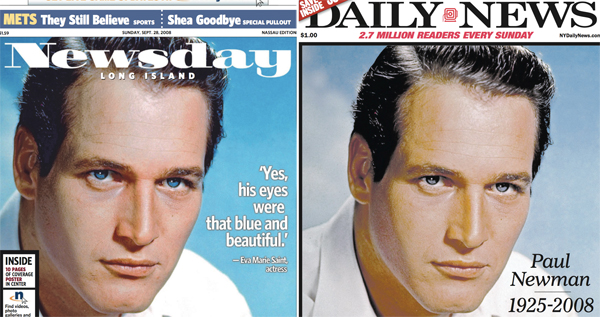

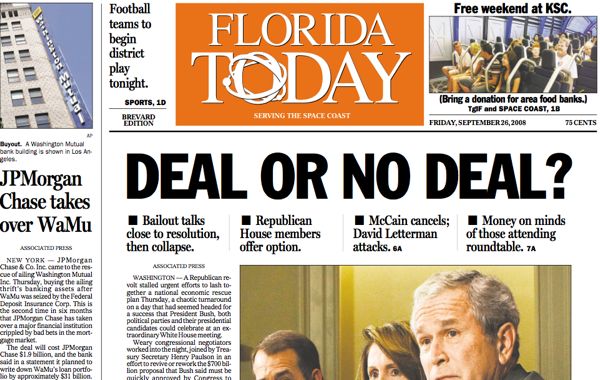
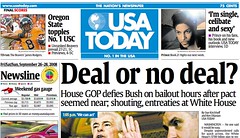 Since President Bush's televised address about the economy Wednesday night, The Associated Press has been referring to the White House summit he arranged as an "extraordinary" event.
Since President Bush's televised address about the economy Wednesday night, The Associated Press has been referring to the White House summit he arranged as an "extraordinary" event.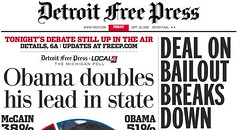 But 41 newspapers, according to my survey of front pages on display on the Newseum's Web site, used some form of "breakdown," "break down" or "breaks down" as their headline for the bailout package.
But 41 newspapers, according to my survey of front pages on display on the Newseum's Web site, used some form of "breakdown," "break down" or "breaks down" as their headline for the bailout package.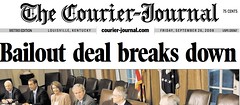 FLORIDA TODAY was not immune to this, of course. We've been relying on the AP for much of our copy throughout this economic debacle. During late-breaking news situations, the AP is especially good at running stories early so we can make deadline.
FLORIDA TODAY was not immune to this, of course. We've been relying on the AP for much of our copy throughout this economic debacle. During late-breaking news situations, the AP is especially good at running stories early so we can make deadline.
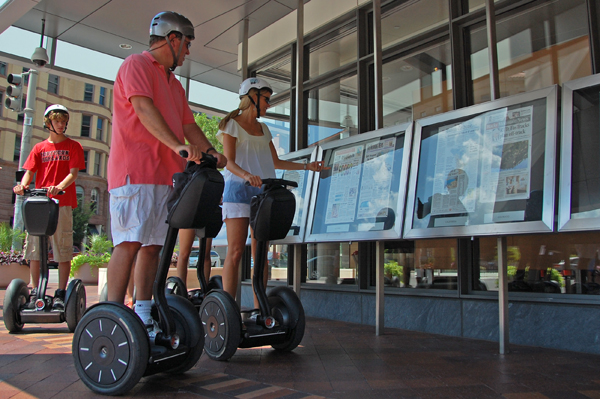
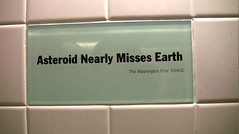 When someone outside the media realm asks me what I do, I say I'm a
When someone outside the media realm asks me what I do, I say I'm a 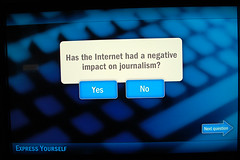 In June, he wrote "In a Changing World of News, an Elegy for Copy Editors," an
In June, he wrote "In a Changing World of News, an Elegy for Copy Editors," an 

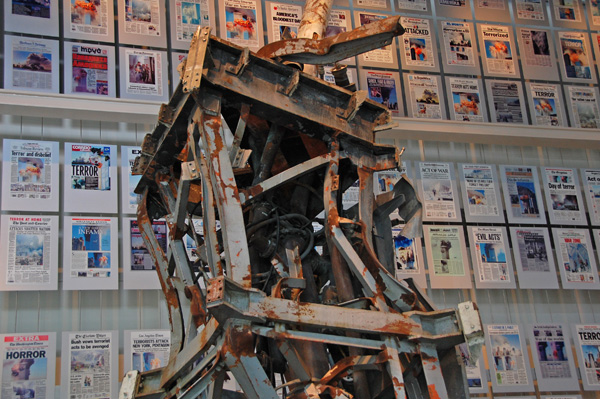

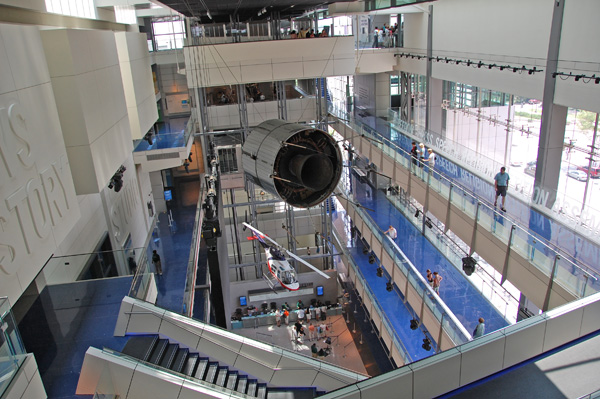
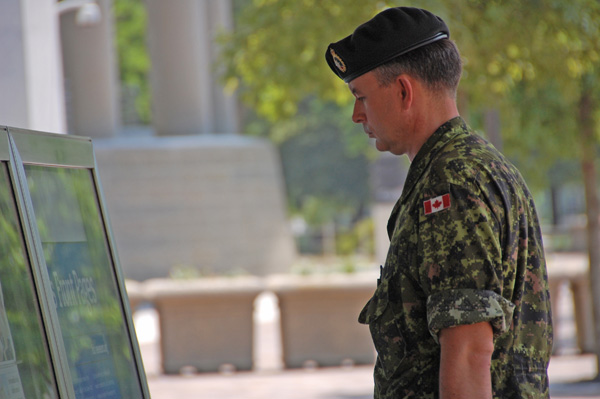
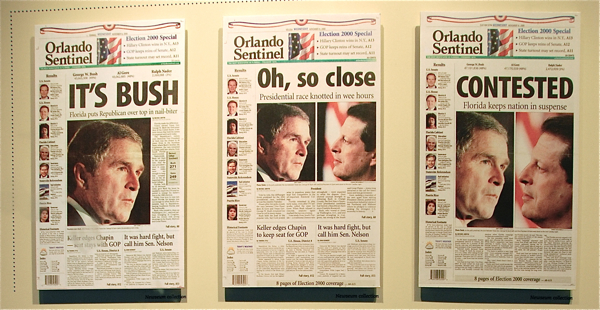
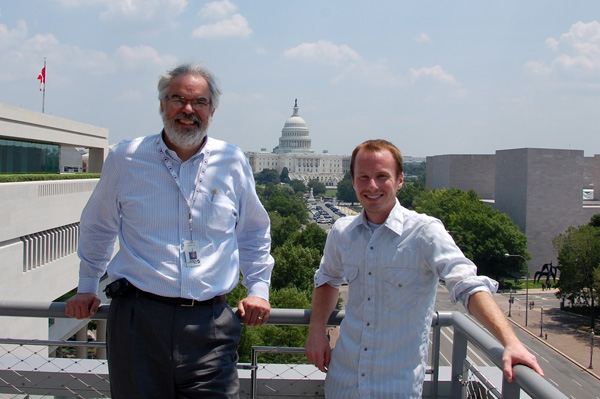
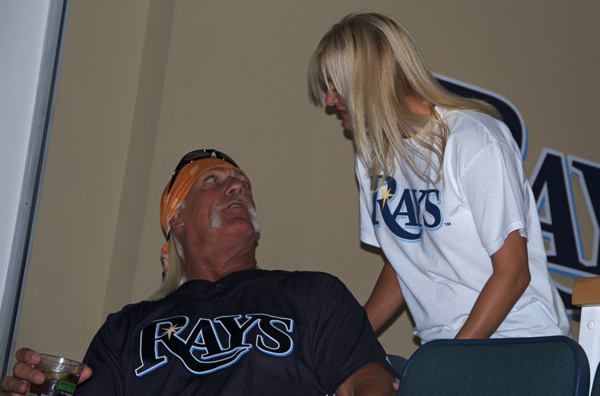
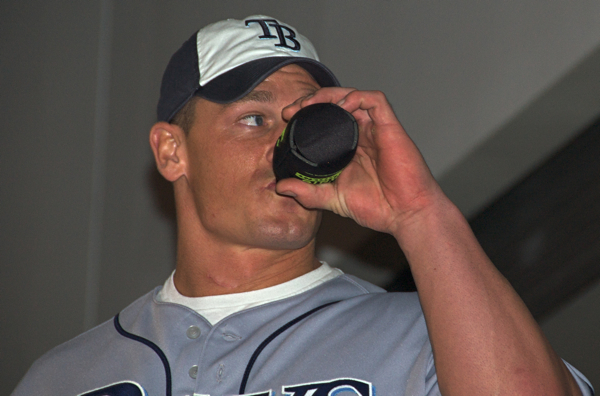
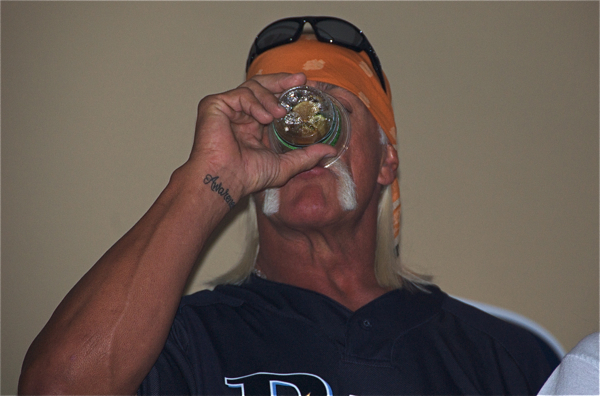
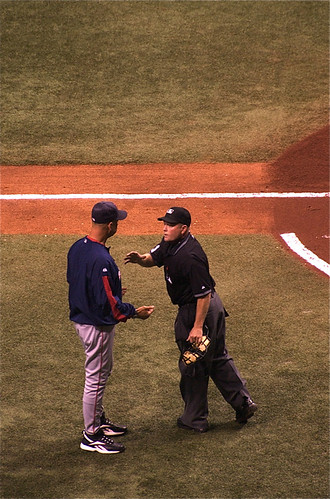 There's something about indoor baseball at a place like Tropicana Field that isn't right: Indeed, a homer by the Sox's Jason Bay hit the ceiling and never came down. That's just wrong.
There's something about indoor baseball at a place like Tropicana Field that isn't right: Indeed, a homer by the Sox's Jason Bay hit the ceiling and never came down. That's just wrong.